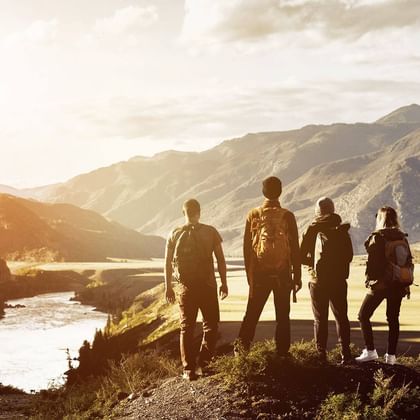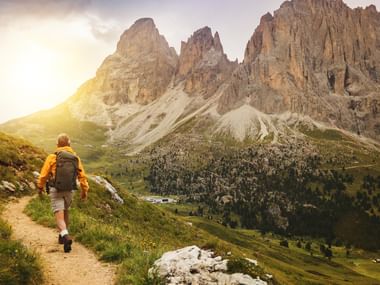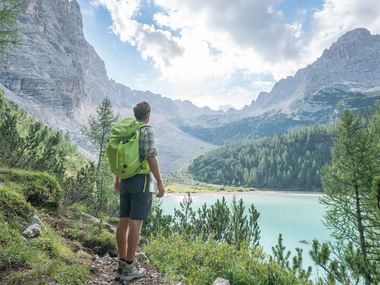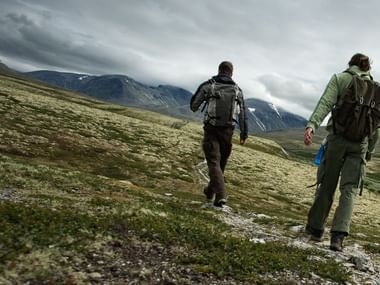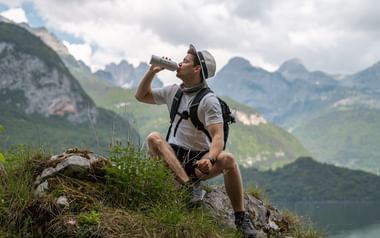Combine both strength and cardio exercises
It's important to train your cardio, but it can also be a great idea to combine cardio with some strength training. Strength training is great for building strength in your knees and thighs, which are especially useful when you go hiking. Some good exercises for your strength training can be the following:
Squats:
Start by breathing in and tensing up your stomach. Slowly lower your bum backwards - almost as if you're about to sit down on a chair. Go deep and then come back up quickly by stretching your legs and tightening your glutes. If you push off with your heels, you'll activate your glutes correctly. Repeat the exercise 20 times. You can play around with the tempo - try going down slowly and up quickly or try going up and down slowly.
Wall sits:
Stand about two foot lengths from a wall. Squat down so that your hips and knees are aligned and your bum is resting against the wall. You should be in the same position as if you were sitting on a chair. Don't move, just stay seated for 30 seconds - feel free to stay seated longer if you can.
Lunges:
Stand with your back straight and feet hip-width apart. Take a step forwards, keeping your upper body as upright as possible, then bend your front leg. Come down until your thigh is parallel to the floor. Push off with your back leg to return to a standing position. Repeat the exercise an equal number of times on each leg - preferably 12-15 times per leg.
The plank:
Squats, wall sits and lunges are all great for your legs and glutes. The plank focuses on your core, which is also important when you're carrying a backpack for many hours - even if it's just a small daypack.
Lie on the ground and rest on your elbows and toes. Tighten your stomach, legs and glutes and then lift your body so that you form a straight line from heel to shoulder. Stay lying down for as long as you can without losing tension in your body.
